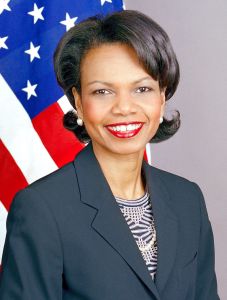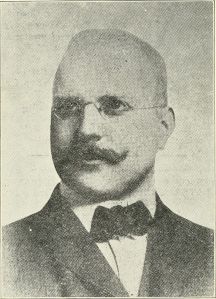Recently, a member of a local Facebook group that focuses on sharing pleasant memories of the past, asked “What part of Birmingham are you from, and what is your favorite memory of that area.”
The post received over 900 comments. Read some of their memories below. (Some of the comments have been edited for brevity and clarity.
Avondale
I enjoyed going to the park. My best friend and I used to walk to Eastwood Mall! Our parents thought we were riding the bus. It was a long walk!
I loved playing in the park when I was a youngster. I was also proposed to in the Rose Garden and said yes. Later, I let our kids play in the same park. – Barbara E.
Belview Heights
I just remember Vinesville Sundries, owned by Old Man Gandy. We would take coke bottles and turn them in for pennies to buy candy. – Philip J.
Bush Hills
I liked that Kiddieland, Rickwood Field, and Legion Field were within walking distance. – Jane C.
Central City
I loved the downtown library, museum, all the downtown movie theaters, YWCA pool and the gym for skating. – Kenya B.
Central Park
I grew up in Central Park and remember the trails where the YMCA is now. They used to be called Miller trails. – Scotty M.
I remember the fair and fireworks. – Mary Ann S.
Chalkville
I remember the Chalkville Elementary School tire playground in the 70s and 80s. – Wade T.
College Hills
I liked that we were very close to Birmingham-Southern College! – Donna L.
Collegeville
I remember walking different streets, from 33rd Place to the Hitower store. My grandma ran one of the corner stores. – Angela C.
East Lake
My favorite memory is the lake! – Wayne P.
I remember walking to Woods Drugstore to get hot peanuts for Daddy. – Pat N.
Ensley
We would go to the swimming pool on Avenue I every day in the summer! – Frank R.
Elyton Village
I liked the football games at Legion Field. I enjoyed walking to Lowe’s Skating Rink and to the Spinning Wheel for a burger and strawberry milkshake, and to the fairgrounds. – Tina G.
Fairfield
I remember going roller skating in the basement of the Fairfield City Hall for 50 cents on Friday nights and going to the Fairfield Theater for a movie on Saturday mornings for either 25 cents or 50 cents. I’m not sure which one. – Gail T.
Forestdale
I loved growing up there and had many friends. We played softball at the old Forestdale Park, Adamsville Park and Park West. We also hung up at Skate Your Date rink. – Lynn G.
Forest Park
We used to walk to Bledsoe’s Drug Store after school for a “suicide” fountain drink and BBQ Golden Flakes chips. – Jayne H.
Homewood
I loved being close enough to walk to the Green Springs 4 theater. – Stephanie S.
I remember Homewood swimming pool and Sam’s Super Sandwich Shop. – Richard M.
I remember when the mall was built but my favorite memory is anxiously awaiting our new high school. – Lisa T.
Inglenook
It was a great place to live as a child. We had fun riding bikes with friends and staying out until it got dark. The only problem was it was in the airport’s flight path. That’s why we had to move to Center Point – the city bought our property.
Mountain Brook
My favorite memory is the high school. I was only there for two years, but it was a great experience with wonderful people whom I treasure to this day. – Thomas F.
North Birmingham
I enjoyed skating around the block and the North Birmingham pool. – Barbara C.
Norwood
I remember Char House restaurant, and I lived around the corner from my grandmother.
Redmont Park
I loved Nola’s Delicatessen in English Village. – Ginger B.
Republic
My favorite memory is of the underwater bridge. – Starleen W.
Roebuck
I remember when Roebuck Shopping Center opened, the first shopping center in Birmingham. Banks High School was the best. Go Jets!
Southside
I loved playing with all the neighborhood kids. We would skate, ride bikes and play at Jordan Park in the summer! – Pat C.
I remember Southside for its diversity and how it shaped me to be a person who values differences. – Carolynn M.
Vestavia
Old Vestavia was the best! – Suzanne W.
Wahouma
We lived right by Wahouma Park and basically lived there in the summer. We spent nearly every day at Cascade Plunge. I remember playing in the vacant lot by our house. We rode bikes all over Eastlake and Woodlawn. – Vicki B.
West End
My favorite memory is growing up there and eating at Jimmy Dee’s. They used to be across from Piggly Wiggly on Pearson Ave. and Tuscaloosa. – J B
I remember Woodward Park, spent every day of the summer there. I also remember Kelly Drug Store and Soda Shop. There are so many great memories and places. – Janice R.
Wylam
I enjoyed hanging out at Hickory Hut when I got older. I liked riding the bus downtown to meet my dad for lunch on the weekends. We walked to the Ensley pool. I loved to shop in a Five Points West and Ensley. It was all good! – Linda C.
Woodlawn
I went to Gibson School and graduated from Woodlawn in 1972. It was a great place to grow up. For Halloween we would all get together and start on Georgia Road. I lived on 52nd Street, and we would walk every street up to First Avenue North. My children and grandchildren will never know how much fun we had without needing a chaperone. Vickie D.
Norwood






























